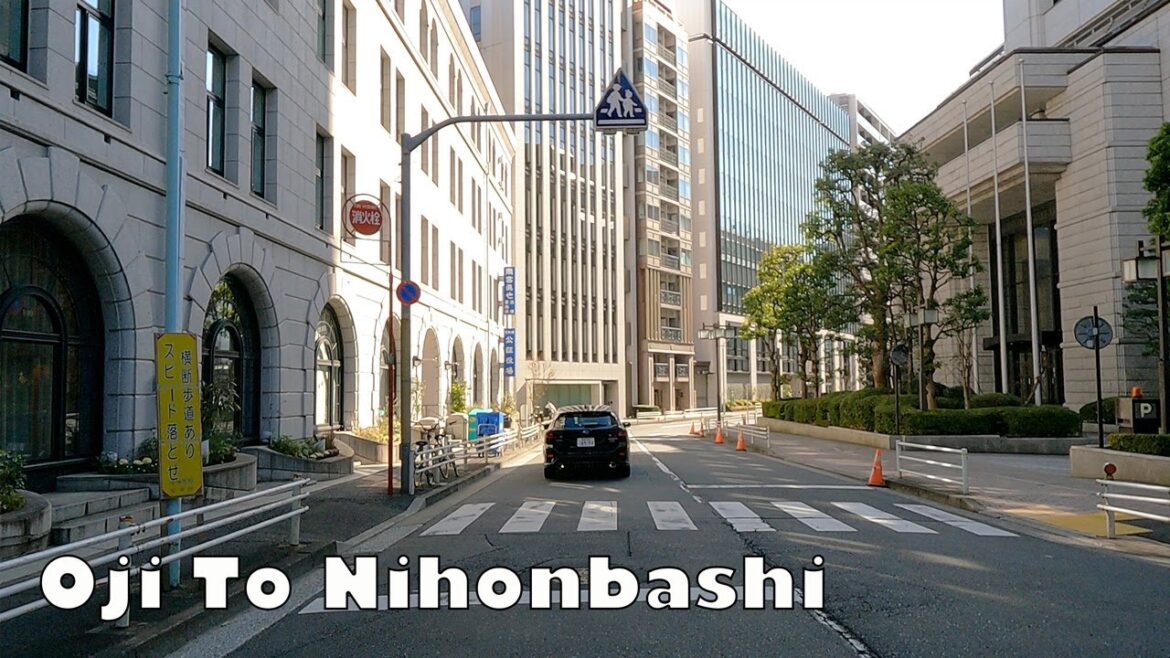A virtual driving tour to Tokyo Japan 2023 on YouTube! Enjoy the trip.
Map: https://www.google.com/maps/d/u/2/edit?mid=1AK-xxMbyoASuEsp8tVsNPFwjdBQCnZk&usp=sharing
Areas and landmarks shown in this video:
Oji 王子
Nihonbashi 日本橋
Playlist
Join this channel to get access to perks
https://www.youtube.com/channel/UCnZKG-Ul-iSEiG8m9dqyp4w/join
Subscribe to get updates from TOKYO SMITH
https://www.youtube.com/c/TOKYOSMITH?sub_confirmation=1
Camera: GoPro HERO9 Black
#TokyoSmith
#japan
#japandrive
Tokyo (/ˈtoʊkioʊ/;[7] Japanese: 東京, Tōkyō, [toːkʲoː] (listen)), officially the Tokyo Metropolis (東京都, Tōkyō-to), is the capital and most populous city of Japan.[8] Formerly known as Edo, its metropolitan area (13,452 square kilometers or 5,194 square miles) is the most populous in the world, with an estimated 37.468 million residents as of 2018;[9] the city proper has a population of 13.99 million people.[4] Located at the head of Tokyo Bay, the prefecture forms part of the Kantō region on the central coast of Honshu, Japan’s largest island. Tokyo serves as Japan’s economic center and is the seat of both the Japanese government and the Emperor of Japan.
Originally a fishing village named Edo, the city became politically prominent in 1603, when it became the seat of the Tokugawa shogunate. By the mid-18th century, Edo was one of the most populous cities in the world with a population of over one million people. Following the Meiji Restoration of 1868, the imperial capital in Kyoto was moved to Edo, which was renamed “Tokyo” (lit. ’Eastern Capital’). Tokyo was devastated by the 1923 Great Kantō earthquake, and again by Allied bombing raids during World War II. Beginning in the 1950s, the city underwent rapid reconstruction and expansion efforts, going on to lead the Japanese economic miracle. Since 1943, the Tokyo Metropolitan Government has administered the prefecture’s 23 special wards (formerly Tokyo City), various commuter towns and suburbs in its western area, and two outlying island chains known as the Tokyo Islands.
Tokyo is the second-largest urban economy worldwide by gross domestic product after New York City, and is categorized as an Alpha+ city by the Globalization and World Cities Research Network. It is also Japan’s leading business hub as part of an industrial region that includes the cities of Yokohama, Kawasaki, and Chiba. As of 2021, Tokyo is home to 37 companies of the Fortune Global 500.[10] In 2020, the city ranked fourth on the Global Financial Centres Index, behind only New York City, London, and Shanghai.[11] Tokyo is home to the world’s tallest tower, Tokyo Skytree,[12] and the world’s largest underground floodwater diversion facility, the Metropolitan Area Outer Underground Discharge Channel (located in Kasukabe, Saitama, a suburb of Tokyo).[13] The Tokyo Metro Ginza Line, opened in 1927, is the oldest underground metro line in East Asia.[14] Recognized as one of the most livable cities in the world, Tokyo was tied fourth with Wellington in the 2021 Global Livability Ranking.[15]
The city has hosted multiple international events, including the 1964 Summer Olympics and 1964 Summer Paralympics, the 2020 Summer Olympics and 2020 Summer Paralympics (postponed; held in 2021), and three summits of the G7 (in 1979, 1986, and 1993). Tokyo is an international research and development hub and is likewise represented by several major universities, most notably the University of Tokyo. Tokyo Station is the central hub for Japan’s high-speed railway network, the Shinkansen; Shinjuku Station in Tokyo is also the world’s busiest train station. Notable special wards of Tokyo include: Chiyoda, the site of the National Diet Building and the Tokyo Imperial Palace; Shinjuku, the city’s administrative center; and Shibuya, a commercial, cultural, and business hub.
Etymology
Tokyo
Tokyo (Chinese characters).svg
Tōkyō in kanji
Japanese name
Kanji 東京
Hiragana とうきょう
Katakana トウキョウ
Kyūjitai 東亰
Transcriptions
Tokyo was originally known as Edo (江戸), a kanji compound of 江 (e, “cove, inlet”) and 戸 (to, “entrance, gate, door”).[16] The name, which can be translated as “estuary”, is a reference to the original settlement’s location at the meeting of the Sumida River and Tokyo Bay. During the Meiji Restoration in 1868, the name of the city was changed to Tokyo (東京, from 東 tō “east”, and 京 kyō “capital”), when it became the new imperial capital,[17] in line with the East Asian tradition of including the word capital (京) in the name of the capital city (for example, Kyoto (京都), Keijō (京城), Beijing (北京), Nanjing (南京), and Xijing (西京)).[16] During the early Meiji period, the city was sometimes called “Tōkei”, an alternative pronunciation for the same characters representing “Tokyo”, making it a kanji homograph. Some surviving official English documents use the spelling “Tokei”;[18] however, this pronunciation is now obsolete.[19]
(Wikipedia)


3 Comments
😊👍
Hi
👍👍😄👍👍
~12:10 – Some of those pedestrian bridges could use a scrape & some paint, but I love the color.
No one seems to pay much attention to the ambulances. Those ambulances don't seem to be in much of a hurry, either.(?) 🚑🚑🚑
😆
هوسل ذل،ششق